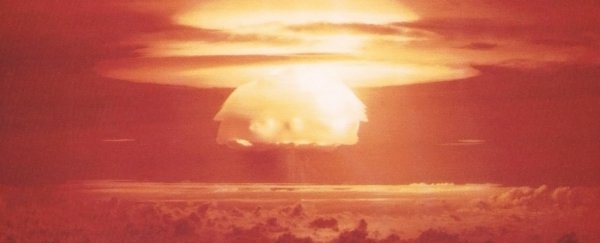In a couple of years, the International Commission on Stratigraphy (ICS) could have an important decision to make. A working group just voted 29 to 4 in favour of recognising a new modern epoch, and plans to formally make its case to the ICS in the next two years.
If you haven't heard of this commission, trust us – to change the official time chart scientists use to mark out the history of our planet, these are the people you'd need to please. And they're not going to do so without asking for a good reason first.
The ICS happens to be the largest organisation within the International Union of Geological Sciences (IUGS), a major coordinating body represented by scientists from 121 countries and regions around the globe.
The commission is just one part of the IUGS, but it has an important task in setting the standards that divide Earth's past into discrete chunks of time.
Some of those chunks we're all fairly familiar with. Most dinosaur-mad kids can cite at least one or two of the three periods making up the Mesozoic era (if you need a hint, there's a famous movie about a fictitious park named after one of them).
For the most part, everybody is happy with the way this geological diary is set out. Well, most of it at least, but it gets tricky when we start to consider humanity's own impact on the planet.
It doesn't take much effort to look around our feet and ask if our own contributions to the planet's crust mark our presence on Earth as somewhat special. Future explorers of our world could easily dredge up signs that something weird happened when modern humans evolved to our current state.
Even once cities crumble, roads erode, and our waste sinks beneath successive layers of sedimentary rock, there will be hints of our dabbling in the nuclear arts, in terms of the ratios of isotopes trapped in rocks and ice.
There'll be layers of geology churned up in strange ways, odd chemical stains from our pollutants, and numerous hints of a stark drop in biodiversity.
The idea of a human-defined ' Anthropocene' epoch has built up steam in the popular space over recent years, but geologists aren't going to subscribe to this new label without discussing the pros and cons at length.
Sure, we might have left our mark on the layers of rock, but this only looks impressive when our nose is pressed against it. Stand back and appreciate 'deep time', say some geologists, and our geological fingerprints might not seem quite as important.
It's this significance geologists are debating, as well as the minor details, such as when any new such epoch should be considered to have started.
University of Leicester archaeologist Matt Edgeworth is one member of the working group who isn't convinced it was a good move.
"The stratigraphic evidence overwhelmingly indicates a time-transgressive Anthropocene with multiple beginnings rather than a single moment of origin," Edgeworth told Meera Subramanian from Nature.
To recognise the starting of the new epoch on the basis of one marker alone – such as radionuclide levels – "impedes rather than facilitates scientific understanding of human involvement in Earth system change," Edgeworth said.
The process is also complicated by a decision made by the ICS to break the current epoch – the Holocene – into three distinct periods called the Northgrippian, the Greenlandian, and the Meghalayan based on climate shifts that affected how our ancestors migrated.
Some were concerned that this decision could affect definitions being considered by the Anthropocene Working Group as they weighed up which side of this geologic divide to come down on.
Back in 2016 at the International Geological Congress in Cape Town, the commission informally considered a proposal for ending the Holocene in the mid-20th century in line with nuclear testing. While it wasn't official, it was clear most of the members were leaning in the direction of soliciting a change.
Last week's vote by the Anthropocene Working Group now marks the start of a process that will see a proposal being put forward to the ICS by 2021.
There's still a bunch of work ahead to building a convincing argument.
The working group has to now agree on a Global Boundary Stratotype Section and Point for the new age. This is a clear, objective line in the sand, as it were, that forms the official boundary. It's no good hand-waving a rough date; geologists need a physical marker, such as a change in radioactive isotopes, or an increase in the ratio of certain molecules set in stone.
Next week, a number of the group's members will meet in Berlin to discuss the state of research and consider various sites around the world that could be used as an official milestone.
For now, you can keep that classic geologic time chart up on your wall, as it will be a while before any official decisions are made.
These things take time, after all.
